What's New
Displaying results 1881 - 1890 of 4052
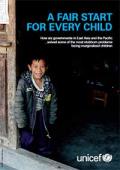
Resource | Publications,
This study aims to better understand the motivation, success factors, and challenges experienced by six countries in the East Asia and Pacific (EAP) region, who have made significant shifts in policies and programmes in order to reach the most disadvantaged and marginalized children.
For UNICEF, “equity” means that all children have an opportunity to survive, develop and reach their full potential without discrimination, bias or favoritism. This concept is particularly relevant to the EAP region, which hosts one-third of the world’s population (two billion people), and one quarter of its children (580 million). Although Asia includes some of the fastest-growing economies in the world, it is also experiencing deepening disparities and increasing inequity, with many communities unable to access the benefits of political, social and economic progress. There are currently 379 million people living in poverty in the region, 97 million of them in extreme poverty and many experiencing multiple deprivations.
This study describes how significant change has been achieved in six countries. It reviews the success factors that enabled the leveraging of political will, resources and partnerships to achieve results in specific communities, and begin expanding to the rest of the country.

Resource | Publications,
Recent global events have underscored the importance of constitutions in the edifice of inclusive democracies and supporting peace building, state building and peaceful political transitions. Countries throughout the world have grappled with how to frame the essential foundations of democratic institutions, values and processes, including checks and balances, the division of powers and individual guarantees. Constitutionbuilding also provides an unparalleled opportunity to shine a spotlight on the importance of gender equality and to provide the legal framework required to ensure that it is enshrined as a fundamental aspect of sustainable human development – a mandate for public policy to proactively pursue the enactment and enjoyment of rights by women.
This publication is designed to support UNDP staff, partners and national stakeholders who wish to advocate for the inclusion of comprehensive constitutional provisions that protect and advance women’s human rights and fundamental freedoms. It presents good practices for the advancement of gender equality in constitutional provisions through the articulation of women’s political, civil, economic, social and cultural rights. Taking examples from existing constitutions throughout the world, it also shows how gender-inclusive language, temporary special measures, the incorporation and adaptation to the domestic context of human rights treaties and institutional measures can protect and advance women’s rights.
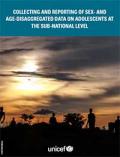
Resource | Guidelines,
This document guides countries through the process of collecting and reporting sub-national data on adolescents to inform programme planning and implementation efforts. This guidance has been developed with the specific aim of identifying data gaps for adolescents and informing immediate programme planning needs at the sub-national level. Specifically, where national systems are being adapted to integrate adolescent sex- and age-disaggregated data into routine monitoring, this guidance informs interim measures to fill data gaps to capture and report adolescent ageand sex-disaggregated data. It is neither designed nor intended to replace existing national monitoring or global reporting mechanisms.
As the content of this guidance draws on examples primarily from the HIV sector to illustrate the collection of sub-national data and service site statistics, it has drawn heavily on the WHO Consolidated Strategic Information Guidelines for HIV in the Health Sector.
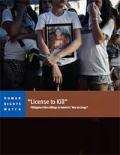
Resource | Publications,
Since the inauguration of President Rodrigo Duterte on June 30, 2016, and his call for a "war on drugs," Philippine National Police officers and unidentified "vigilantes" have killed over 7,000 people. The anti-drug campaign dubbed "Operation Double Barrel" has targeted suspected drug dealers and users ostensibly for arrest but in practice has been a campaign of extrajudicial execution in impoverished areas of Manila and other urban areas. Duterte's outspoken endorsement of the campaign implicates him and other senior officials in possible incitement to violence, instigation of murder, and in command responsibility for crimes against humanity.
This report examines 24 incidents, resulting in 32 deaths, involving Philippine National Police personnel between October 2016 and January 2017. Human Rights Watch found that the official police reports of these incidents invariably asserted self-defense to justify police killings, contrary to eyewitness accounts that portray the killings as coldblooded murders of unarmed drug suspects in custody. To bolster their claims, the police routinely planted guns, spent ammunition, and drug packets next to the victims’ bodies. No one has been meaningfully investigated, let alone prosecuted, for these killings.
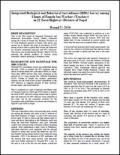
Resource | Fact Sheets,
This is the fifth round of Integrated Biological and Behavioral Surveillance Survey (IBBS) conducted among the Clients of Female Sex Workers (Truckers) in 22 Terai Highways districts of Nepal. This survey was carried out to identify the trend in prevalence of HIV among truckers and to explore their sexual risk behaviors for sexually transmitted infection and HIV infections. This survey was carried during February- March 2016 by selecting the desired numbers of truckers using systematic random sampling at Pathalaiya, Bara.
National HIV surveillance system was established during the early 1990s to monitor the HIV epidemic and to inform evidence-based HIV prevention efforts in Nepal. Since then, IBBS surveys have been conducted at the interval of 2-3 years among Key Affected Population (KAP). Clients of female sex workers, particularly truckers, are one of the KAPs as their vulnerability to the HIV infection is triggered because of their mobility, alcohol intake, and sexual behavior.
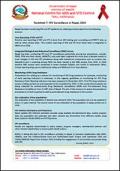
Resource | Fact Sheets,
Nepal has been conducting HIV and STI surveillance particularly among key populations, namely: PWID, FSW and their clients, MSM/TG, and male labor migrants for more than a decade mainly to track changes in HIV and STI prevalence along with behavioral components such as condom use. Hepatitis-B and C screening among PWID has been started in the IBBS surveys from 2015. In 2016, baseline IBBS surveys were conducted in Street Involved Children and Youths in Kathmandu Valley, Female injecting drug users in Kathmandu Valley and MSM and TG in Terai districts.
Size estimation of key population in districts was started in 2010. The population size is to be updated in every 2-3 years interval. The second round of size estimation of key population is being carried out in 2016.
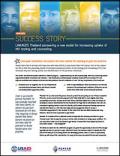
Resource | Publications,
Fewer than half of all men who have sex with men (MSM) in Asia know their HIV status. Part of the reason for this is that the prevailing model of outreach-based promotion of HIV testing and counseling (HTC) has achieved only low testing uptake and identication of HIV-positive individuals.
The USAID and PEPFAR-funded LINKAGES Thailand program — implemented by FHI in partnership with local community-based organizations Mplus Foundation and Caremat — has introduced an enhanced peer mobilizer model (EPM) to increase HTC and improve enrollment and retention of those who test positive in the HIV continuum of care. The key components of this model are:
- Increased focus on targeted, one-on-one interpersonal communications between clients and trained, salaried community-based supporters (CBSs)
- Shift of responsibility for client recruitment to an informal network of incentivized peer mobilizers (PMs) who recruit clients from within their social and sexual networks
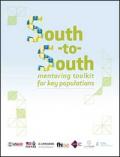
Resource | Tools,
Although much knowledge has been transferred from the global South to the global South (S2S) and numerous guides have been produced about mentoring, few tools exist to guide mentors in how to best conduct S2S mentoring. In S2S mentoring, all organizations involved, including the mentors and mentees, are rooted in the global South and have direct experience operating in complex environments in low- and middle-income countries. Mentoring can be provided more regularly and more efficiently by organizations in the same or neighboring countries and is often more readily accepted when the mentor’s messages, approaches, experiences, and lessons learned come from a setting similar to that of the mentee's.
LINKAGES designed this toolkit to support and guide existing mentors from key-population-led organizations (KPOs) in the global South to enhance the quality of mentoring support available to other KPOs in the global South. Specifically, this toolkit aims to support mentors in the global South to understand what S2S mentoring is, their role in S2S mentoring, different S2S mentoring approaches and how to choose among them, and the technical skills needed to mentor effectively.
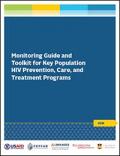
Resource | Tools,
This publication provides guidance to governments, civil-society organizations (nongovernmental organizations [NGOs] and community-based organizations), and other partners implementing HIV prevention, care, and treatment programs with key populations. The approach recognizes that site-level monitoring and individual tracking are needed to ensure that key population individuals access high-quality outreach and clinical services routinely, and that these services are run efficiently. This guide is designed to assist these programs as they establish monitoring systems that are used by frontline workers, including peer outreach workers, staff outreach supervisors, program managers, and others to understand performance. It includes comprehensive tools and forms that various levels of staff can use to collect and analyze data to manage and improve the program. These include population size estimation tools, mapping tools, facility monitoring tools, and client registers.
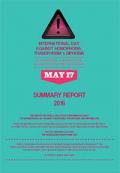
Resource | Publications,
With hundreds of events registered across the world, the International Day Against Homophobia, Transphobia and Biphobia has once again proven to be an essential moment in the global advocacy for sexual and gender minorities.
The global focus issue of IDAHOT 2016, Mental Health and Well Being, was part of many of these events, highlighting the need to combat so-called conversion “therapies”, to stop the medical classification of Trans identities as mental troubles, and to care about the mental well-being of LGBTI people.
While most activities were held successfully, including in challenging places like Moldova, Brunei, Jordan, Russia, Uganda or Pakistan, several IDAHOT events had to be cancelled under pressure. This year about 15% of IDAHOT initiatives were not announced in advance for fear of triggering hostility. This situation should remind us all that LGBTI people still need support, solidarity and sometimes protection.





